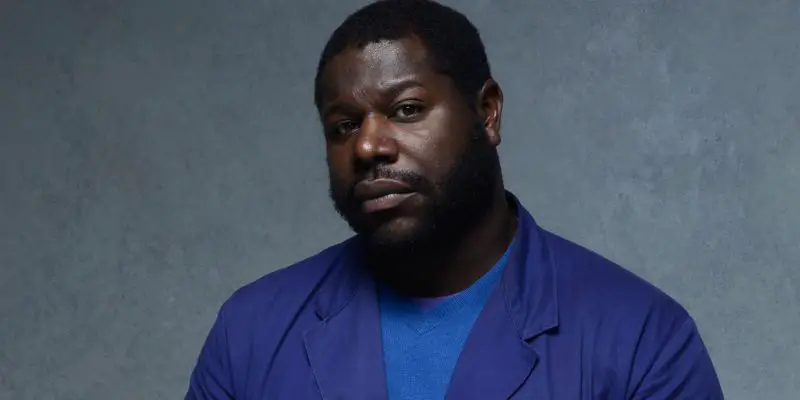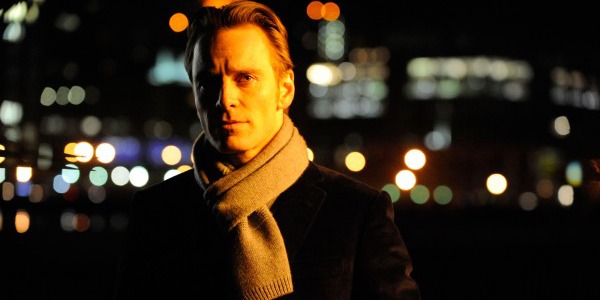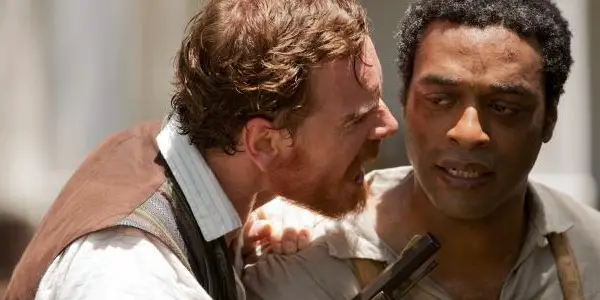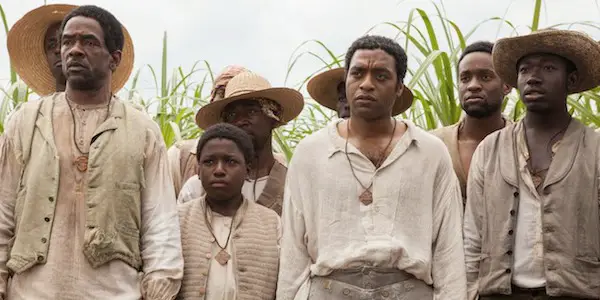The Beginner’s Guide: Steve McQueen, Director

Raul Marin is a contributor for Film Inquiry. He is…
There are some film directors who really exemplify the work of an artist. You could say their work is special in its own way, and every director has their particular style. There is no question about the passion, intensity, and creativity in the art work they create. In order for it to be considered a masterpiece, it should be provocative and inspiring. It should be something that you can’t get enough of.
There is an expectation of film directors to inspire us all with very original and transcending work. We are living in a time when so many of today’s films are parts of prequels, sequels, trilogies, adaptations, reboots, and/or remakes. Thus, it may be difficult to find a director who is dedicated and willing to push the boundaries of what we consider to be a great film.
Acclaimed director Steve McQueen is one of these directors. Of his 26 directing credits, three of them are full-feature films: Hunger, Shame, and 12 Years A Slave. Lets take a look at what makes each of these films a work of art.
Hunger: A Sacrifice Of Body And Mind
Based on the true story of the 1981 IRA Hunger Strike led by Irish republican Bobby Sands (Michael Fassbender), it is a chilling and dramatic recollection of the events that took place in the Maze Prison leading up to his death. This was the first of three collaborations between Fassbender and McQueen thus far.
McQueen shared his thoughts on why he made this film during an interview with Empire. In this interview, he talked about the importance of wanting to tell this story, and having the passion to bring this story to life on screen. Those are two qualities that we should expect to find in every film. Without passion, Hunger is a story that on film, would appear to be the same as many other films that have been done based on a true story. Without the desire to tell this story, the sacrifices of these men during this strike could remain unknown for many years. So, as an audience, we should appreciate watching this story being told on screen from an engaging perspective, while learning about a historic event in the process.

In the same interview with Empire, McQueen talked about his interest in observing how people deal with the situations that they are up against. As you watch this film, you will see that these characters took matters into their own hands and pushed their minds and bodies to the limit with a terrible hunger strike. Whenever there is a film based on a true story or a novel, it makes sense to expect of that film to accurately reflect the story in both the writing and the scenes performed. From the disturbing images of the physical consequences of this strike, you can believe that McQueen‘s objective was to show the unflinching reality of this story; which puts a lot of focus on the writing of this film.
Playwright Or Screenwriter
According to his interview with Empire, one of the things that McQueen thought about when writing the dialogue for Hunger was whether to write it from a playwright or screenwriter’s perspective. From a screenwriting perspective, the writing may change its focus and objective from scene to scene. In contrast, play writing appears to be much more free-versed with analysis along the way. There is no right or wrong way of approaching the writing. The key is how the writing is done to add substance to the conversations between the characters. There is one scene in particular, that really carries the weight of the words spoken in this film. It is a conversation between Sands (Fassbender) and a priest. The meaning of the words exchanged really go beyond that scene, and carry a sentimental value in the actions that Sands and the others would take.
The supporting cast in this film includes Stuart Graham, Brian Milligan, Liam McMahon, and Rory Mullen. Their collective actions provided their voice and reason of protest against the British government, which imprisoned them for their political affiliations. While it can be disturbing to watch the physical abuse that they suffered, there is a huge level of respect felt for these characters for sacrificing their lives to make a strong statement. As the first film in McQueen‘s resume, it began a series of films with great visual style and powerful performances.
Shame: A Private World
In his second film with McQueen, Michael Fassbender plays Brandon in Shame; a rather secretive character in terms of why he is the way he is. He is a man that relishes the solitary, sexually-addicted lifestyle that he has. The first question that comes to mind when looking at a character like this, is why? It takes a tremendous amount of gravitas to show a character who is driven and consumed by an addiction; especially a sexual one. Characters with addictions are no strangers to films, but rarely have we seen a character so obsessed with, yet so vulnerable to sexual activity. The fact that we know so little about him is intriguing enough to let his performance dazzle you from beginning to end, and makes you wonder what message McQueen tried to send.
The decision on McQueen‘s part to not reveal so many details about Brandon’s life is a great one because it leaves you with the need to make your own conclusions and interpretations. From the moment that we are exposed to his obsessive-compulsive approach to sexual acts, you get the feeling that there is nothing outside of this lifestyle for him. As much as he gets pleasure out of his addiction, there is an emptiness in his life that it cannot fill. This depiction of Brandon’s life is hauntingly realistic.

Fragile And Vulnerable
Speaking at a press conference to promote Shame, McQueen talked about his desire to show the fragile condition of human beings. Fragile is a strong adjective to describe how dependent we are things that satisfy us. As you watch Brandon feed his addiction in the most realistic and uncensored ways, you cannot help but wonder about his past. There is something about his past that torments him, and has a heavy influence on how he thinks and what he does. We can see that influence on him with the introduction of his sister Sissy (Carey Mulligan), in the film.
One of the most profound and stimulating aspects of this film is watching the relationship between Brandon and Sissy unfold. They are two characters who could not be more different, but yet they are exactly the same. Just from looking at their body language, you can really sense emotional tension between them. We don’t know what is at the root of this tension, but we really don’t need to know because their contrasting personas play off of each other. This is character development at its best: we can see how the presence and absence in the other’s life has an affect on what they do.
From the detail of every camera shot, to the music that intensifies the drama, this is a film with a very dark and tragic look at what happens to a person who is completely controlled and consumed by a sexual addiction. It is a very bold move on McQueen‘s part to show a male character with that type of addiction given the amount of sexual references that we can see in film, television, music, and advertisements today. It is also important to consider the fact that the film has a NC-17 rating, which shows that there is a specific audience in mind for this film and how realistic its content is.
12 Years A Slave: Don’t Survive, Live!
McQueen‘s third and most recent film, 12 Years A Slave, is one that earned nine Academy Award nominations and won three of them: Best Motion Picture of the Year, Best Performance by an Actress in a Supporting Role, and Best Writing, Adapted Screenplay. These achievements only tell part of the success of this film that tells the incredible true story of Solomon Northup (Chiwetel Ejiofor). In a time prior to the Civil War, Northup was a free man. This piece of information is of monumental significance because it is important to reflect on the value of freedom. We are so caught up in the routines of every day life, that we forget how incredibly fortunate we are to live in a country where we may have the freedom to control our own destiny.
This film tells the unflinching, brutal, and merciless story of a free man, Solomon, who was captured and sold back into slavery. He is a man who chose to live, not survive, 12 agonizing years of it. Note Solomon’s words, “I don’t want to survive. I want to live”, even as the cruelty and punishment that he experienced were unspeakable. From the moment he becomes a slave once again, you immediately sense the lack of peace, happiness, light and hope that he once had as a free man. The only certainty he had was that he would be treated as property and not as a human being. Getting called by his name was the only acknowledgement of him as a man.

Patsy (Lupita Nyong’o) is another character in this film who finds herself as a victim of the ferocious and ruthless aggression of her owner, Edwin Epps (Michael Fassbender). At what point do we choose death over life because of pain that has been suffered? One of the film’s most touching moments, a conversation between Patsy and Solomon, shows the lack of resistance that Patsy has for the physical abuse that she has received. Both emotionally and physically, her spirit has been damaged and dying seems like the best solution to her constant suffering. Along with collaboration, resistance is a theme that McQueen has worked into his films since the beginning. He talks about the reason of these themes in his films in an interview with The Guardian.
Collaboration Or Resistance
The beating heart of 12 Years a Slave lies in the courage, unwavering will, and the resistance of Solomon from falling into despair. Going back to his work in Hunger and Shame, and as you watch this film, you can see a pattern of watching the protagonists suffer a period of overwhelming and grave pain in McQueen‘s films. It takes them a great amount of resistance to get over the pain, but more importantly for the audience, their resistance makes them that much more intriguing to watch on film. What Solomon delivers in this film is a remarkable display of what the power of the human spirit can accomplish when it overcomes the most difficult challenges.

There are some people who criticize the brutally violence in this film. However, what McQueen presents in this film without any restrictions or reservations is a haunting and terrifying look into the slavery that Solomon Northrup was able to survive. Sometimes the most memorable stories have devastating beginnings. Yet the opportunity to live through the suffering and tell the story is a remarkable achievement. Every aspect of this film makes you feel as though you were a part of this brave man’s incredible journey to earn his freedom and see his family once again. As you watch the heart-stopping finale, you realize how important freedom and family are.
What’s Next?
After watching three very distinct but similar films in terms of the emotional and physical pain felt by the protagonists, you have to wonder what’s next for Steve McQueen? What he has demonstrated with these three full-feature films is that he will make serious dramas that focus on social commentary. From hunger strikes and protest, to sexual addiction, to slavery, he has shown commitment to directing films that discuss some of the darkest topics in society today.
It’s interesting to think about the direction that he will take when directs his next film. Will he continue to follow the pattern of doing dark and gritty dramas that involve resistance, or will he go in a completely different direction? Regardless of the order in which you watch these films, you can expect to see films with great visual style, and dramatic and powerful performances from the cast. From a directing standpoint, we know that there will be a strong desire and passion to bring the story to life on screen.
What is your favorite film by Steve McQueen and why? What actors or actresses would you like to see him work with next?
Please join the discussion, and share this guide with others to enjoy what we can only hope are just the early works of Steve McQueen.
(top image source: unknown)
Does content like this matter to you?
Become a Member and support film journalism. Unlock access to all of Film Inquiry`s great articles. Join a community of like-minded readers who are passionate about cinema - get access to our private members Network, give back to independent filmmakers, and more.
Raul Marin is a contributor for Film Inquiry. He is a teacher by day and a DJ by night, but he's a film fan 24/7! His favorite genre is drama.













